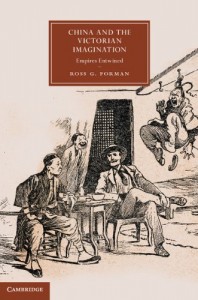Posted: July 18th, 2013 | 2 Comments »
for the Sun Yat-sen enthusiasts out there who might not know about this new catalogue from the SYS and Hong Kong exhibition running at the HK Museum of History till October 30th….

| Dr Sun Yat-sen & Hong Kong: Dr Sun Yat-sen Museum Exhibition Catalogue |
Produced by Hong Kong Museum of History
Published in July 2013
Hard cover, 316 pp
Price: HK$155
ISBN: 978-962-7039-76-1 |
|
Featuring insightful articles and around 500 historical images and maps, this newly edited catalogue is divided into three main sections: ‘Dr Sun Yat-sen and Modern China’ explores Dr Sun’s life and his path from school to revolution; ‘Hong Kong in the Time of Dr Sun Yat-sen’ explains why Hong Kong proved to be such an effective staging post for Dr Sun’s revolutionary cause in terms of timing, geographical convenience and human talent; ‘The Development of the Dr Sun Yat-sen Museum’ looks at the history of the 100-year-old Kom Tong Hall, which houses the museum today, as well as the colourful life of its original owner, Ho Kom-tong. Shedding light on the indissoluble links that connect Dr Sun with Hong Kong, the catalogue pays tribute to this great historical figure on the 130th anniversary of his first visit to the territory.
|
Posted: July 17th, 2013 | No Comments »

Apologies for self-promotion but this week Midnight in Peking was awarded the Crime Writers’ Association (UK) “Dagger” for non fiction! Am I happy – you bet. Word also of The China List – Penguin China’s special promotion happening right now in Hong Kong at the Hong Kong Book Fair 2013, held from 17-23 July, at Hong Kong Exhibition and Convention Centre. Just get over to the Swindon’s booth…..

Posted: July 16th, 2013 | No Comments »
Ross Forman’s China and the Victorian Imagination is now available….

What happens to our understanding of ‘orientalism’ and imperialism when we consider British-Chinese relations during the nineteenth century, rather than focusing on India, Africa or the Caribbean? This book explores China’s centrality to British imperial aspirations and literary production, underscoring the heterogeneous, interconnected nature of Britain’s formal and informal empire. To British eyes, China promised unlimited economic possibilities, but also posed an ominous threat to global hegemony. Surveying anglophone literary production about China across high and low cultures, as well as across time, space and genres, this book demonstrates how important location was to the production, circulation and reception of received ideas about China and the Chinese. In this account, treaty ports matter more than opium. Ross Forman challenges our preconceptions about British imperialism, reconceptualizes anglophone literary production in the global and local contexts, and excavates the little-known Victorian history so germane to contemporary debates about China’s ‘rise’.
Posted: July 15th, 2013 | No Comments »
Shanghai’s old Royal Hotel is not one of the best known of the city’s former establishments. But it’s interesting all the same. Off the beaten track a bit up on Range Road (Wujin Road) on the northern borders of Hongkou it was something of a resort hotel I believe – weekends maybe or somewhat secretive assignations perhaps, Shanghai’s own Brighton for couples wanting a little privacy not too far from home or family! Anyway, in the 1930s The Royal seems fairly decent with private bathrooms, hot water and central heating. Signor Velicogna, the manager, appears to have been Italian, hence the restaurant and the veranda sounds nice – the hotel would probably have had views of the Range Road rifle range, some open land and across Chinese Paoshan (now Baoshan) as well as the Pantheon Theatre round the corner. Not quite so charming had you been staying there in the summer of 1937 as the area was occupied by British troops defending the Settlement from Japanese incursion. Further along the road was also the Municipal Isolation Hospital for foreigners with contagious diseases and, one assumes, the rather noisy Anglo-Chinese School. Very close was the Japanese YMCA for Shanghai.
I’m out of Shanghai right now but if any exploring inclined Shanghailander would like to go along and try and find the old 209 Range Road and see if anything’s still there I’d appreciate it?

Posted: July 14th, 2013 | No Comments »
An interesting new book, and long overdue really, on the Birth of Chinese Feminism…also an interview here on Shanghaiist with the authors….

He-Yin Zhen (ca. 1884-1920?) was a theorist who figured centrally in the birth of Chinese feminism. Unlike her contemporaries, she was concerned less with China’s fate as a nation and more with the relationship among patriarchy, imperialism, capitalism, and gender subjugation as global historical problems. This volume, the first translation and study of He-Yin’s work in English, critically reconstructs early twentieth-century Chinese feminist thought in a transnational context by juxtaposing He-Yin Zhen’s writing against works by two better-known male interlocutors of her time. The editors begin with a detailed analysis of He-Yin Zhen’s life and thought. They then present annotated translations of six of her major essays, as well as two foundational tracts by her male contemporaries, Jin Tianhe (1874-1947) and Liang Qichao (1873–1929), to which He-Yin’s work responds and with which it engages. Jin, a poet and educator, and Liang, a philosopher and journalist, understood feminism as a paternalistic cause that liberals like themselves should defend. He-Yin presents an alternative conception that draws upon anarchism and other radical trends. Ahead of her time, He-Yin Zhen complicates conventional accounts of feminism and China’s history, offering original perspectives on sex, gender, labor, and power that remain relevant today.
Posted: July 13th, 2013 | 1 Comment »
OK, so this is one of those occasional (actually quite regular) obscure China Rhyming posts – this time about the possibility that Churchill sat around the bunker in Whitehall throughout the Blitz being cleverer than Hitler in a silk Chinoiserie embroidered robe. Well, it’s an image conjured in the novel Orders from Berlin by Simon Tolkein (a great summer read by the way) which concerns Nazi spies in high places in Churchill’s bunker and Mi5. At one point Churchill is described considering how to defeat the Nazi’s clothed only in a red (I think) silk robe ornamented with Chinese dragons and other motifs. Can this be true!! Did Chinoiserie comfort and beauty help us defeat fascism?
Well, a quick google search reveals that Churchill did indeed wear silk robes. Churchill’s Private Secretary recalled him in the bunker in a blue silk robe of “heavily brocaded silk and snakeskin slippers”. Additionally George McKee Elsey, an aide to Harry Truman, recalled Churchill staying at the White House in 1945 in a silk robe. A few other wartime diplomats recall the silk robes too but not the specific Chinese-ness of them. Still, I like to think that Winnie plotted the defeat of Der Fuhrer shrouded in a bit of Chinoiserie as the bombs fell on London….sadly I don’t think of a photo exists of the great man draped in his silk chinois finery…and can you imagine that arse Adolf in a Chinoiserie robe!!

Posted: July 12th, 2013 | 2 Comments »
Shanghai is getting hotter and I’m off on my holidays. How to keep cool, those left in the city over the sweltering next couple of months? In the 1930s Ovomaltine was recommended….

Posted: July 11th, 2013 | 2 Comments »
 I recently started reading George Simenon’s non-Inspector Maigret books – after being (as it turns out) correctly educated by The New Yorker – I started with The Widow (a great read by the way). It turns out that Simenon’s non-Maigret novels are easily the equivalent of Camus. However, ever a Chinese related conundrum! Simenon has a wonderful description of a beerhall on the 1940s streets of Paris, Boulevard St. Michel on the Left Bank to be precise. This beerhall is a place for down and out and various reprobates (and students) to play cards, poker and drink as they all fall hopelessly in love with fallen women and then inevitably into debt. The joint is called “The Mandarin” – but did it exist? is it based on a real place? In his many, many novels featuring Inspector Maigret, Simenon makes much and oft use of the Boulevard St Michel and surrounding streets of the Latin Quarter, though usually for the lovely cafes rather than disreputable dive bars. I’m going to have to assume that Simenon made up The Mandarin, but if anyone knows any different then do please let me know?
I recently started reading George Simenon’s non-Inspector Maigret books – after being (as it turns out) correctly educated by The New Yorker – I started with The Widow (a great read by the way). It turns out that Simenon’s non-Maigret novels are easily the equivalent of Camus. However, ever a Chinese related conundrum! Simenon has a wonderful description of a beerhall on the 1940s streets of Paris, Boulevard St. Michel on the Left Bank to be precise. This beerhall is a place for down and out and various reprobates (and students) to play cards, poker and drink as they all fall hopelessly in love with fallen women and then inevitably into debt. The joint is called “The Mandarin” – but did it exist? is it based on a real place? In his many, many novels featuring Inspector Maigret, Simenon makes much and oft use of the Boulevard St Michel and surrounding streets of the Latin Quarter, though usually for the lovely cafes rather than disreputable dive bars. I’m going to have to assume that Simenon made up The Mandarin, but if anyone knows any different then do please let me know?










